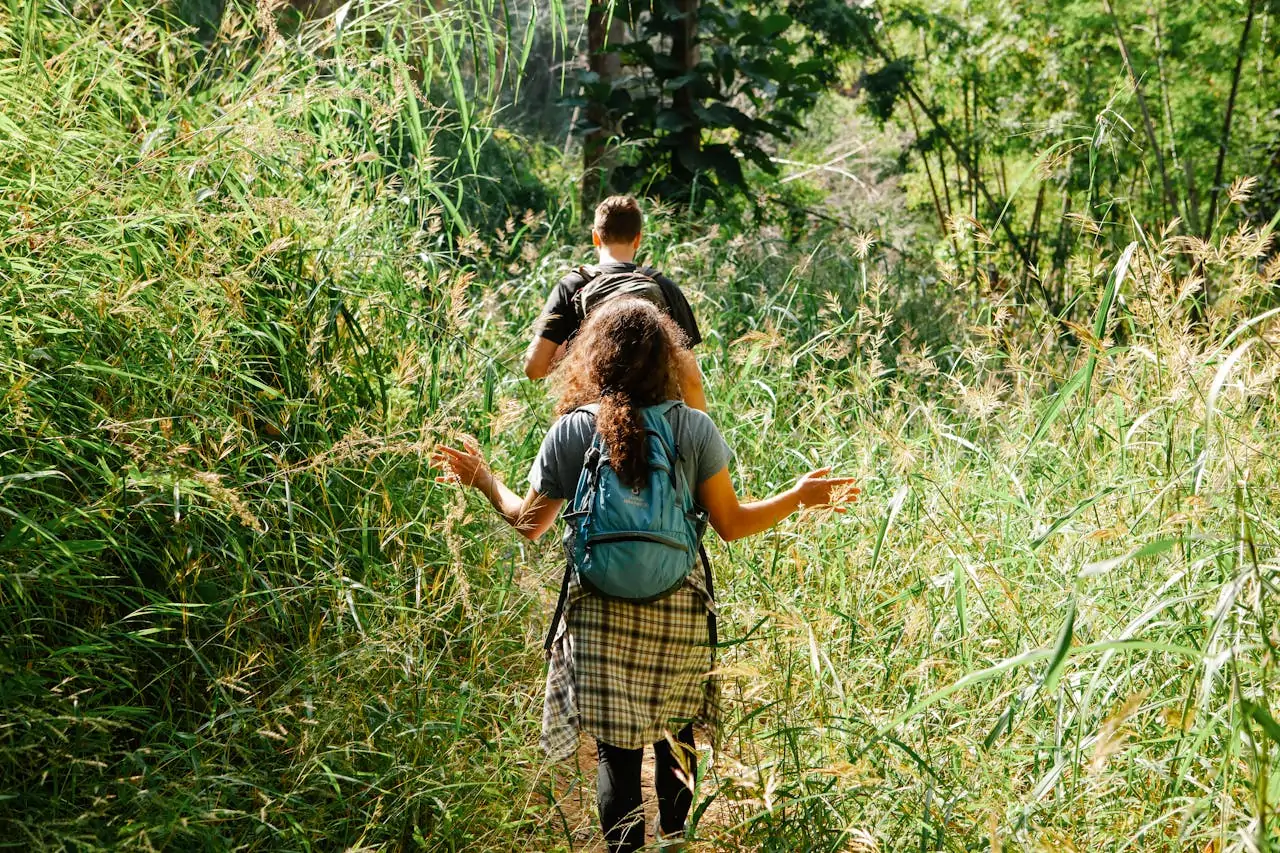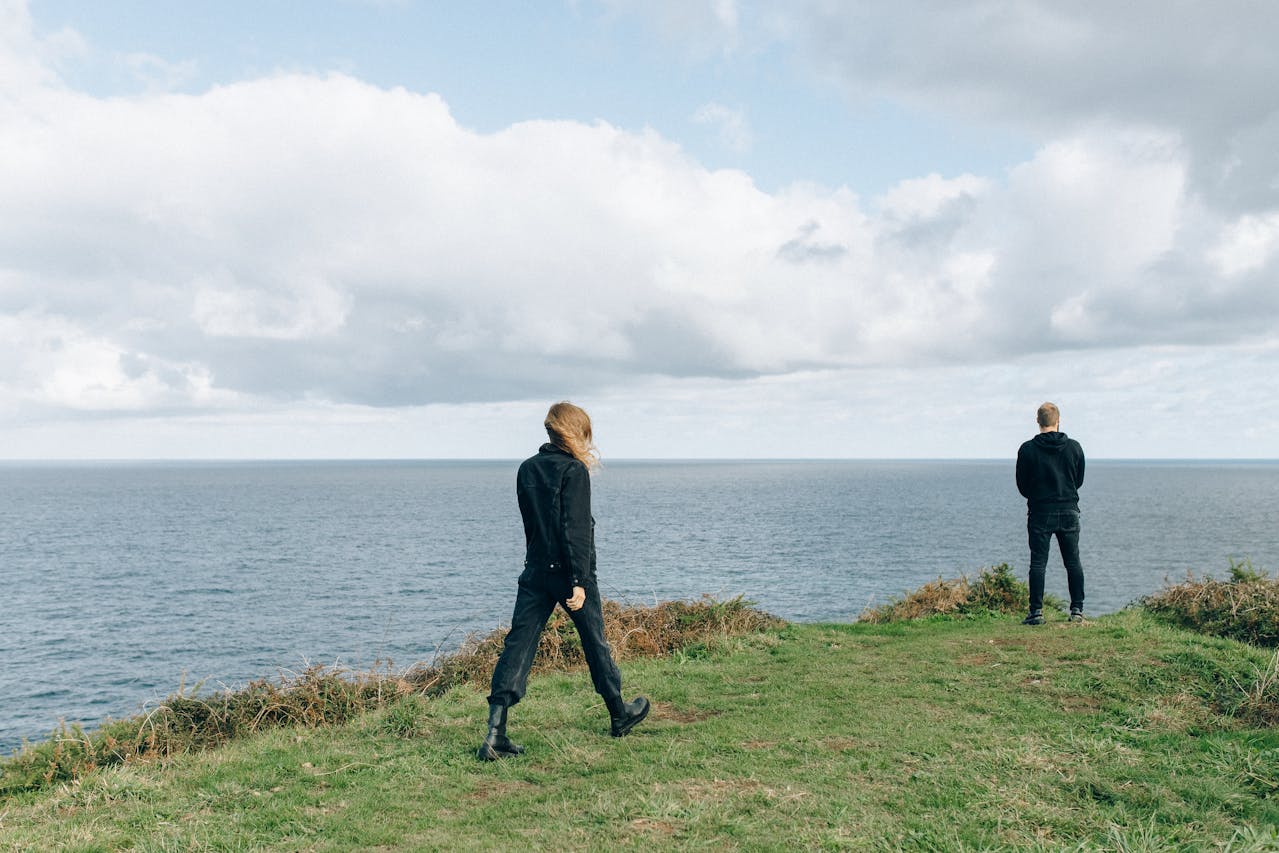Hiking has lots of benefits: it’s not just great exercise, but it’s also really good for your mental health. If you’re new to hiking, you might be wondering if you’re fit enough to go hiking at all. The good news is, you can! No matter how fit you are, there are hikes for every level, and with some training, you can work your way up to longer and more challenging hikes.
Training for hiking is super important to keep you from getting hurt and to help you feel confident before you hit the trail. Remember, there’s no “right” way to hike—whether you’re fast or slow, climbing big mountains, or just walking on local trails, hiking is one of the best (and easiest!) ways to enjoy nature.
1. Start a Simple Stretching and Exercise Routine
Before you head out on your first hike, it’s a great idea to start a stretching and exercise routine. This doesn’t have to be hard or complicated.
Just doing a few easy stretches and exercises each day can help make your muscles stronger and more flexible, so you feel ready to tackle the trail. Stretching and toning your muscles can also help you avoid getting hurt.
Always remember to listen to your body and pay attention to any signs of pain. This practice can help you learn when to push yourself or when it’s better to turn around on tougher hikes. Keep up with these stretches and exercises as you hike more to stay strong and healthy.
Strength Training
Here are a few easy strength training exercises that focus on the muscles you use most when hiking. These exercises are great for staying healthy and fit, and you can do them anywhere because they use your body weight, so no equipment is needed (but you can add weights if you want):
- Lunges: These strengthen the front of your hips and quadriceps, and they help keep your knees and ankles strong.
- Squats: These target your quadriceps and glutes (the muscles in your thighs and butt). Make sure to squeeze your glutes as you stand up!
- Calf Raises: This simple exercise strengthens your calves. Just stand up straight, push through the balls of your feet, and lift your heels until you’re on your tiptoes.
Yoga
Yoga is another fantastic way to train for hiking, whether you’re a pro or trying it for the first time. Check out our blog post on the best yoga poses for hikers, which includes many great stretches to help you recover after workouts and get ready for hiking.
I also highly recommend The DownDog Yoga App. It offers fully customizable yoga classes where you can choose the length, style, difficulty level, voice, music, and more. It’s perfect for beginners!
Resistance Bands
Resistance bands are another great tool to help you get stronger for hiking. When you stretch a resistance band, it creates tension, which makes your muscles work harder.
The more you stretch the band, the tougher it gets, helping you build strength and control. You can use resistance bands to work out every major muscle group in your body, making it a full-body workout.
One of the best things about resistance bands is that they don’t put as much pressure on your joints as weights do. That’s why they’re often used in injury recovery to help strengthen muscles and improve movement without straining your joints. This low-impact strength training exercise will help you get in shape and ready to hit the trails.
2. Start Building Your Lung Capacity
To avoid getting out of breath while hiking, it’s important to build up your lung capacity and improve your heart health. You can do this by doing some cardio exercises a few times a week, like brisk walking, running, cycling, swimming, or anything else that gets your heart pumping.
Here are three easy ways to build your lung capacity:
Do 5 Cardio Workouts Each Week
Try to fit in five or more cardio workouts per week to improve your lung capacity and get better at handling long hikes. Experts say that this can boost your lung capacity by 5 to 15%. Cardio workouts can include running, walking, cycling, swimming, or anything else that gets your heart rate up.
Practice Breathing Exercises
In addition to your weekly workouts, set aside some time to do simple breathing exercises. These exercises can help increase your lung capacity for hiking and also activate the Parasympathetic Nervous System (PNS), which helps you feel calm and relaxed.
And when your body is relaxed, you can breathe easier! Try this easy breathing exercise to stay calm, focused, and energized both on the trails and in your daily life.
Stretch
Make space for your breath by doing simple stretches that help loosen up your shoulders, chest, and sides. These stretches can expand the muscles around your rib cage and diaphragm, which can help you build greater lung capacity for hiking. A few easy stretches can make a big difference in how well you breathe on the trail!
3. Go for a Hike
Consistency is key to building endurance and increasing your lung capacity on a hike. It might sound like a cliche, but the more you get out there and hike, the stronger you’ll become. Take the exercises and breathing practices you’ve been doing at home and apply them to real-life situations when you’re on the trail.
If you’re preparing for a hiking trip but don’t have easy access to trails, don’t worry! You can still get in shape by running, biking, climbing stairs at your local stadium, going for long walks (extra points if there are hills!), or even paddling across a lake. Just try to take your training outside as much as possible so you get used to being active in nature instead of just in the gym.
4. Commit to a Training Routine
Getting started with your hiking training, or any new healthy habit, is often the hardest part. It’s easy to get distracted by daily life and put off exercise, but remember, taking care of yourself should be a priority.
Those emails and chores can wait! Hiking releases endorphins that help relieve stress, and there’s nothing more important than the long-term health of your body and mind.
When committing to a routine, find a schedule that works for you. If you’re not a morning person, don’t sign up for a 6 a.m. workout. If evenings are busy with family, try fitting in your hiking training during lunch. Set aside a specific time in your day as “you-time” and don’t let anything else get in the way.
A helpful tip is to find an accountability buddy. This could be someone to work out with, hike with, or even just share your progress with, like swapping sweaty selfies. Having someone to encourage you can keep you motivated and help you stay on track with your goals.
5. Give Your Body the Right Fuel
You can start a plant-based diet and feel better than ever—leaner, lighter, and full of energy. Since cutting out meat and dairy, you don’t feel as heavy after meals, and hiking and exercising have become much easier.
If cutting out meat and dairy completely isn’t possible for you, that’s okay! Just try to reduce your intake and focus on eating more nutritious whole foods to give your body the fuel it needs.
6. Be Kind to Yourself
Everyone has to start somewhere. Your starting point might be walking up a hill in your neighborhood or going for a 2-mile run. It doesn’t matter where you begin—what matters is that you’re challenging yourself.
Each day of your hiking training, try pushing yourself just a little bit more. I wasn’t always a hiker—in fact, I struggled a lot when I first started. But you can do this, and I promise the benefits of hiking will be worth it. Happy hiking!









